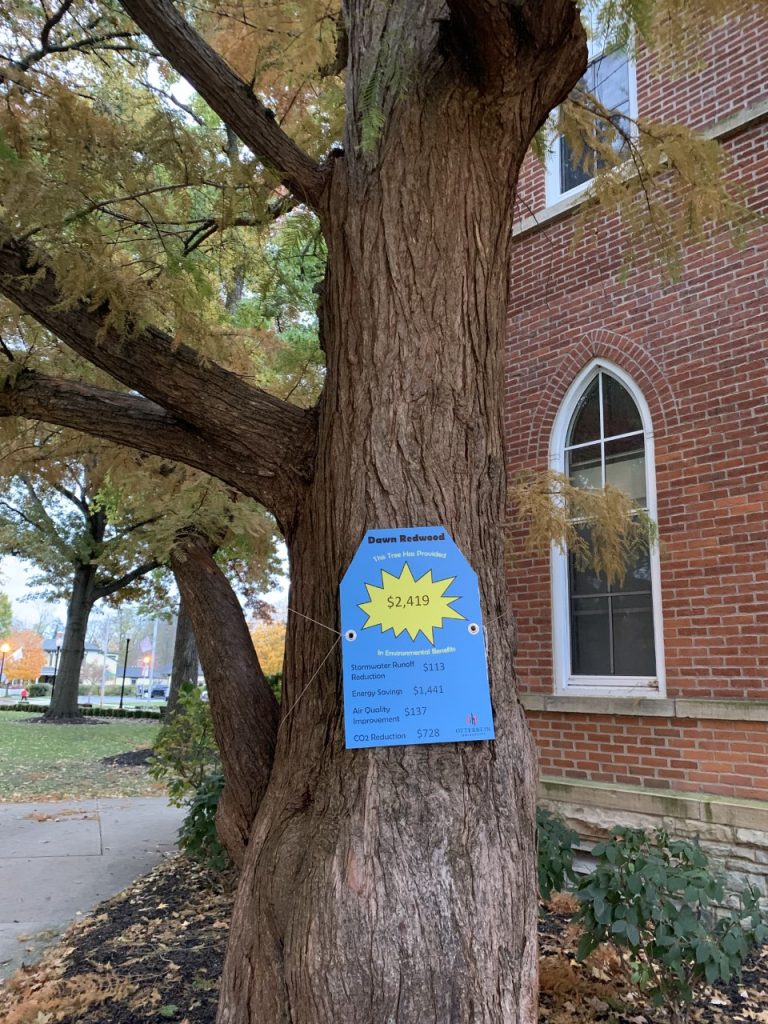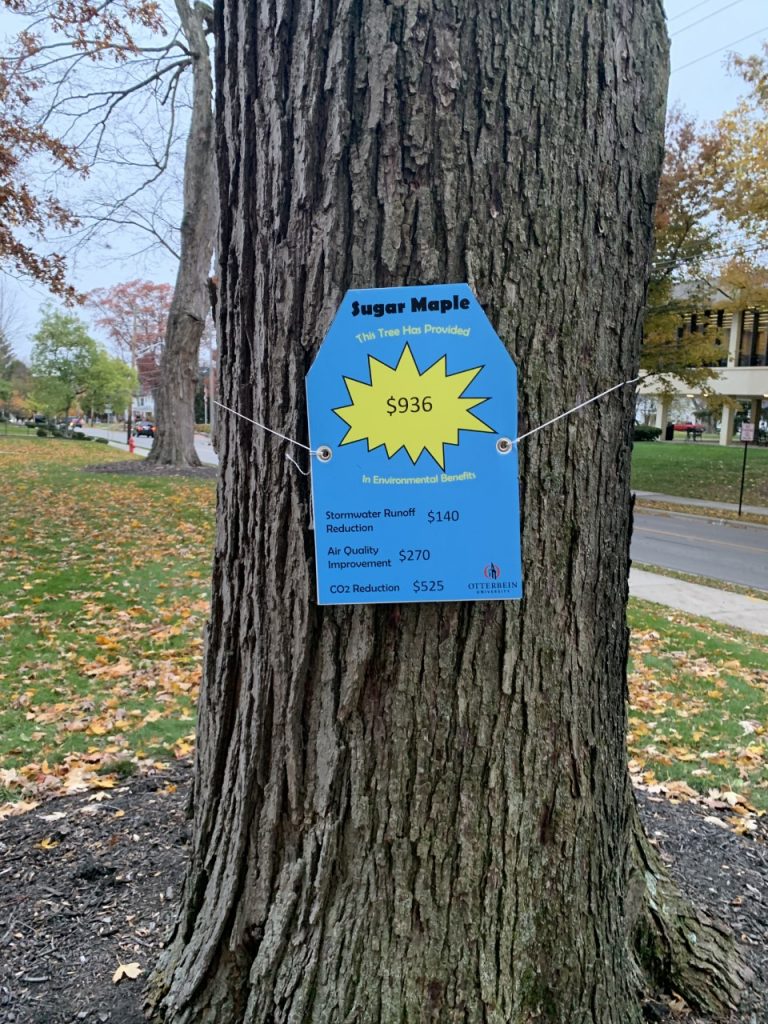Otterbein Conservation Biology and Conservation Psychology Collaborate in Tree-Tag Project
Posted Dec 14, 2021
By Payton Kaufman ’24
During fall semester, some campus trees were adorned with a new accessory: information tags educating the campus community on the environmental benefits of different types of trees.
For the tagging project, Professor of Biology and Earth Science Sarah Bouchard and her conservation biology students teamed up with Professor of Psychology Michelle Acker and conservation psychology students to understand the impact the educational tags had on perceptions of students, faculty, and staff.

The tags provided facts about environmental benefits like stormwater run-off reduction, energy savings, air quality improvement, and carbon dioxide reduction, assigning a dollar value to each.
“An important part of conservation biology is assessing what you do to see if there is any kind of impact on public perception, so I called Professor Acker to see if she could talk to my class to design a survey,” Bouchard said.
“I told Professor Bouchard I had an entire conservation psychology class that needed to do a project,” Acker said.
Bouchard brainstormed the tag idea after her husband, who works for the Ohio Department of Natural Resources Division of Forestry, spoke to her previous classes about tree-tagging benefits. The conservation biology students had a positive response to the proposal, Bouchard said.
“The students learned a lot about the benefits of trees,” Bouchard said. “Sometimes students think of conservation biology as more about the species they love, but this shifted their focus to conserving ecosystems as a whole.”
On the conservation biology side, students were tasked with identifying trees to tag and then collecting data about the individual trees. They used this data to print the tags for the trees in the Maker Space at The Point.
“We used a website called iTree Design to input the variables which produces the information on the tags,” Bouchard said. “Once it has all of the information, iTree does the calculations for you (on the value of each tree).”

Acker and her conservation psychology students created various surveys to distribute to Otterbein students, faculty, and staff. The survey was distributed to groups before the tags were put up and again after. The survey received responses from over 200 people.
“One way to evaluate was to look at the knowledge gained by the tree tags,” Acker said. “We expanded beyond that to think about how people feel about trees, and more generally the environment.”
Both Bouchard and Acker noticed how the project exemplified the idea of Integrative Studies, as well as interdisciplinary studies, as the two different departments worked together on the project.
“We talk a lot about Integrative Studies here, and while these aren’t official Integrative Studies classes, the project was true to the idea,” Acker said. “It is a trademark of Otterbein that we work together and cross disciplinary boundaries.”
While the future plans of the tree-tag project is unknown by Bouchard and Acker, anyone can use the following websites to value trees in their surrounding iTree and National Tree Benefit Calculator.